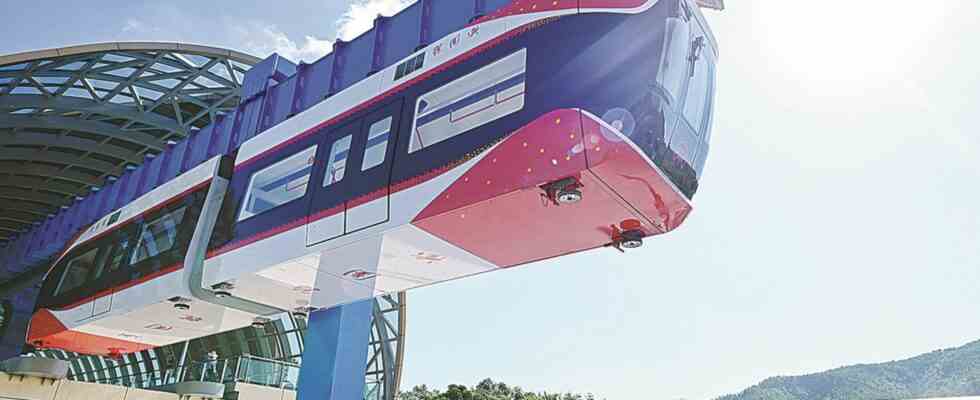Compared to the planned ultra-fast magnetic levitation trains, which are supposed to accelerate to 1000 km/h in vacuum tubes, the 800-meter-long test track in the southern Chinese district of Xingguo looks inconspicuous. But it redeems its “revolutionary” name “Red Rail” because it is based on a completely different magnet system.
All magnetic levitation trains do not move on rollers, but levitate on a magnetic cushion. This eliminates the friction between the track and track – there is no longer any rolling resistance. So far, the effect has been generated by electric magnets. So you don’t save a lot of energy, the lack of friction is offset by the power consumption of the route. In addition, the “tracks” are far more complex and expensive than with conventional rails.
Only possible in China
“Red Rail”, on the other hand, uses permanent magnets to levitate. It is a classic local transport system. The line will be elevated and the cabins will hover at a height of around ten metres. This takes up little space on the floor. The magnets are strong enough to let the cabins for 88 people levitate “forever”. The train should now reach about 80 km/h. The train hangs with one arm under the tracks. It contains the permanent magnets. Since the train levitates freely and there is no friction, only electricity is needed to propel it, according to researchers from Jiangxi University of Science and Technology. The cost of construction is only about a tenth of the cost of building a subway. In a next step, the test track is to be extended to 7.5 kilometers in length, after which the maximum speed will be 120 km/h.
Conventional magnets are not enough to make a train levitate. The real revolution of “Red Rail” lies in new types of permanent magnets. The Chinese government has been investing in them since 2001. Magnetized iron quickly loses its magnetic power again. However, if you add rare earths, the magnetic force becomes permanent. Neodymium reduces the loss of magnetism to less than 5 percent in a hundred years. Since China has the largest deposits of rare earths, Beijing also accounts for more than 80 percent of the world’s production capacity for permanent magnets. Translated, this means: Such a railway can only be built in China.
Global leadership
Such magnetic levitation trains would have what it takes to revolutionize local public transport. One of Beijing’s goals is to achieve technological leadership worldwide in the entire rail sector. Construction costs and space requirements for the railway are relatively low. The system can ensure rapid clocking of trains. At 120 km/h, the speed would be far higher than that of subways. In addition, it is assumed that the “tracks” will be very durable, because they are not subject to much stress due to the lack of vibrations.
Also read:
Beijing’s new magnetic levitation train – almost silent and 200 km/h fast
Tower of the 99 Islands: China builds floating attraction in Shenzhen
Faster than an airplane – South Korea’s hyper train reaches over 1000 km/h

